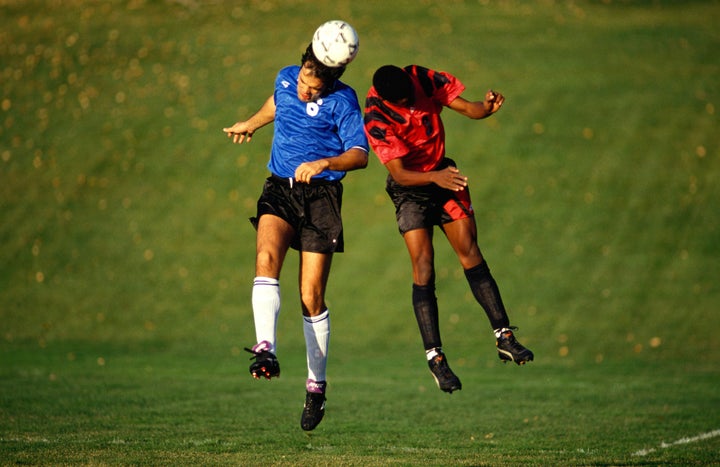
Abby Wambach may have set the sports world aflutter last summer with a blazing header that gave the U.S. women's national soccer team a crucial overtime win over Brazil. But new research suggests the practice it takes to achieve that level of cranial competence may have serious implications for players' brains.
In new data presented Tuesday at the Radiological Society of North America's annual meeting, researchers from the Albert Einstein College of Medicine used an advanced MRI technique to detect microscopic changes in the brain's white matter. They looked at 32 amateur soccer players who were approximately 31 years old and had played soccer since they were kids.
What the researchers found is that heading a soccer ball constitutes a form of repetitive, mild brain trauma among those who do it most.
The new data suggests that frequent headers, i.e. those players who headed the ball between 1,000 and 1,500 times per year (or around three to four times a day), had low fractional anisotropy (FA), which measures how water moves along the millions of nerve fibers in the brain. In healthy white matter, water moves relatively uniformly and FA is high. When the movement of water is more random, FA values decrease -- a state that has been linked to cognitive impairment.
"This is the first study that's really looked at the brain in this way," said Dr. Michael Lipton, associate director at the college's Magnetic Resonance Research Center and one of the study's authors.
"It's unique because we're showing this dose response," he continued. "The message here is that this low-level but repetitive injury is associated with these adverse consequences."
The researchers focused on FA measurements in areas of the brain responsible for attention, memory, making plans and multi-tasking, as well as high-order visual functions. They took pains to control for outside factors that might impact the brain, like concussive injuries. They did not find any evidence to suggest that those who head the ball more frequently are more aggressive and thus sustain more concussions from head-to-head or head-to-goal contact.
Lipton cautioned that the new findings must be replicated and further evaluated before researchers truly understand what the differences in FA actually mean. Groups like the American Youth Soccer Organization have said that heading is a skill that must be properly taught and only to children age 10 and up, but have ultimately concluded that it is part of the game.
Other sources are equally unclear. A 2010 report in the journal Pediatrics looking at youth soccer injuries referenced earlier research that suggested that 81 percent of their pool of Norwegian adults who had played soccer since youth had deficits in attention, concentration and memory, but said further study is needed before conclusions can be made about the safety of heading in soccer.
Which at this point may be the one thing experts can agree upon: that the new study and others like it suggest a critical need for further study, particularly in light of estimates that as many as 18 million Americans play soccer.
"What does this mean clinically? People can have changes in brain MRIs, they can have obvious brain damage in imaging, and might never have a manifestation of [that] problem," said Dr. Jeffrey S. Kutcher, director of the University of Michigan's Neurosport Program. "It's very intriguing and it points to why we need to do more clinical research on this."
In the meantime, he said that soccer players and their parents should be aware of the "dose" of their impact and should limit that as much as reasonable. Players should avoid gratuitous contact and gratuitous heading.
"If it's part of a game, great. But it shouldn't be a 'practice half-an-hour every day' kind of deal," Kutcher cautioned. "And if you're going to play a contact sport like soccer, don't go from soccer one season to hockey and rugby the next. Use common sense."